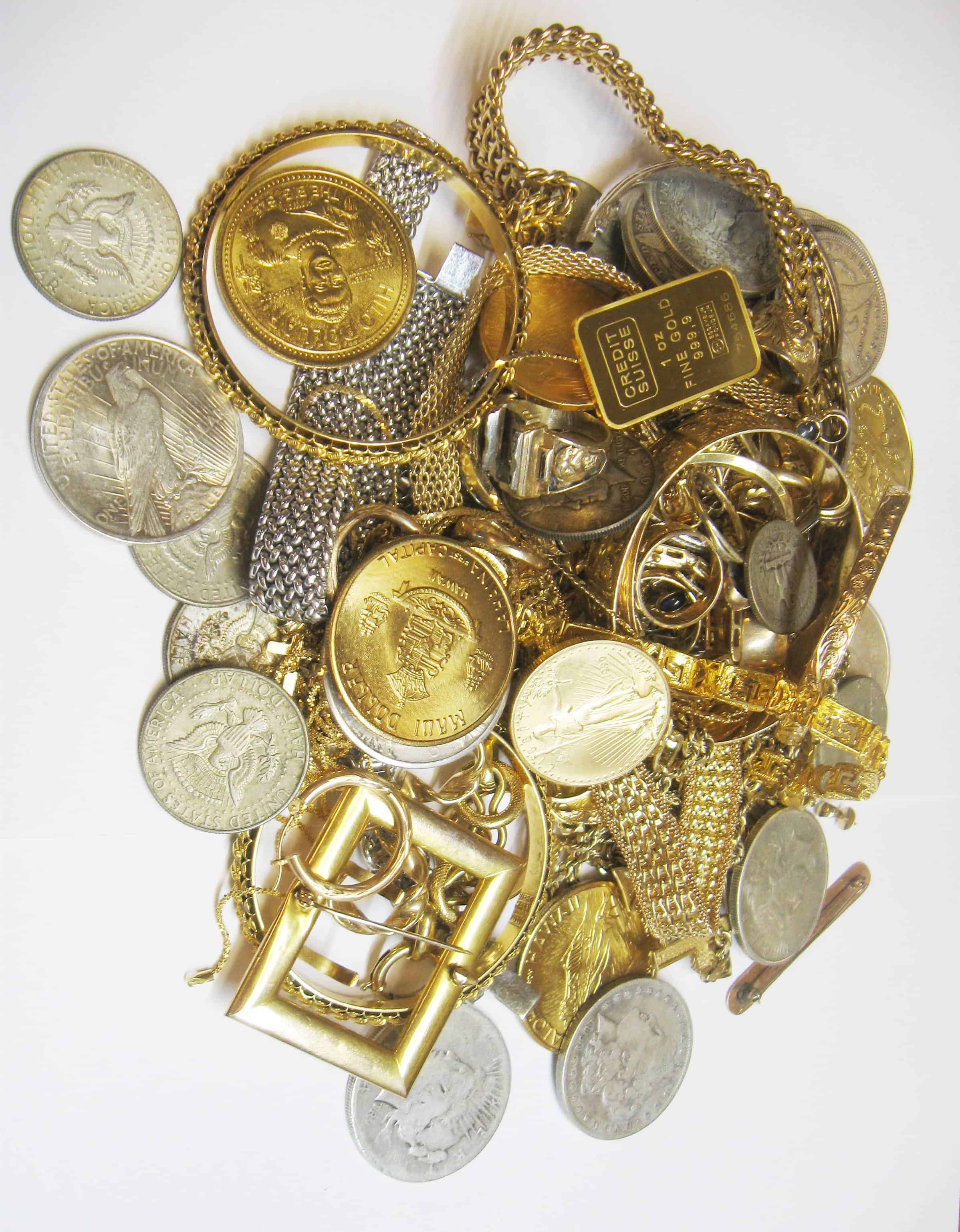All lenders take a risk, but pawnbrokers live with an unquantifiable risk that most other lenders do not have to worry about: the possibility that gold will crash.
We have written often about how our

Some of Kamaaina Loan’s gold inventory.
Maui pawn shop is at the mercy of the world gold market on the Kamaaina Loan blog. Today, the lesson is driven home in an example from England: Albemarle & Bond, a chain with 180 locations, was caught holding a lot of gold when the price started falling last year. Now it’s bankrupt.
Albemarle’s situation was partly of its own creation. According to earlier news reports, it chose to hold gold.
Kamaaina Loan’s situation is different in important respects. First, we are not a stock company. The stock market can act with brutal swiftness when it perceives that a company has bet wrong. While gold is down about a third from its recent peak, Albemarle & Bond’s stock went down 97%.
Second, we do not hold a lot of gold. We have some in inventory as jewelry at our retail store at 96 N. Market St. And we have quite a lot being held as collateral for loans at our pawn shop at 52 North Market Street.
State law requires us to hold pledges for 60 days. Right now (according to the historical charts at Kitco.com), gold we lent against 60 days ago is worth a little more than it was then: $1310 an ounce this morning compared with $1260 then.
Over the past six months, the net change in gold has been almost 0, although there have been many ups and downs in between.
We prefer that our customers redeem their gold pawns, as most do. First, a redeeming customer is probably a satisfied customer who might want to do another loan someday. Second, if we have to take over the collateral, there are overhead expenses, so even if gold has gone up a few bucks, we might not cover our costs by selling. And if gold goes down over 60 days, we for sure cannot cover our expenses.
Over the long haul, the best way to play the world gold market is not to try to beat it but to go with the flow: Sell gold as it comes in and live with the ups and downs. As we understand it, that is not what Albemarle did. They held gold when they didn’t have to and got burned.
Pawnbrokers in India, who are even more tied to gold than even American pawnbrokers, apparently are caught in the Albemarle trap, too.
It’s great when gold goes up. Everybody feels happy, and those who are holding “physical gold” as the speculators like to call it make windfall profits. If that sounds like the real estate business in the early 2000s, that’s because the situation is parallel.
Leverage works just as much in down markets as in up markets, though.









